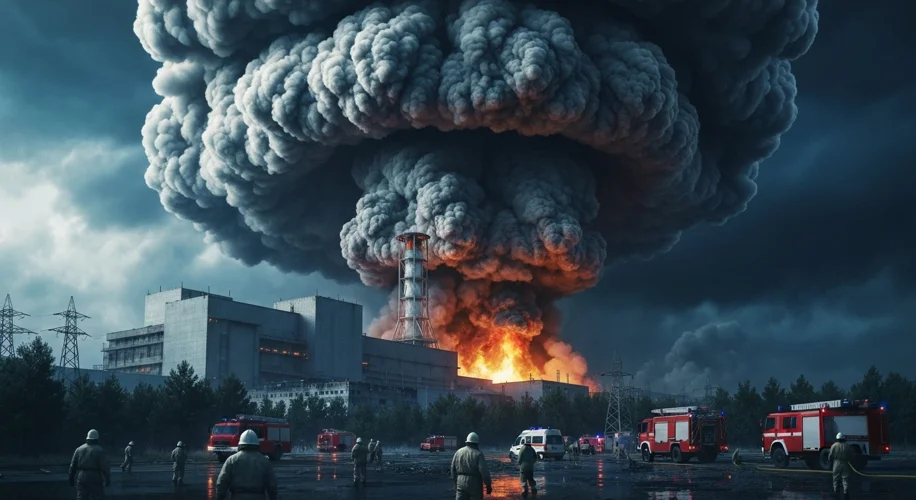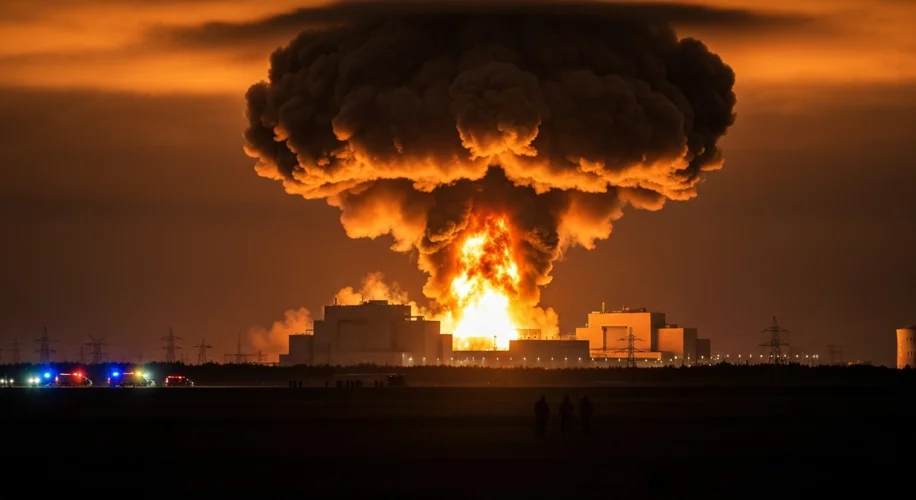The air in Pripyat, a city built for the workers of the Chernobyl Nuclear Power Plant, was thick with the scent of pine needles and the hum of a burgeoning Soviet utopia. It was April 26, 1986. Inside Reactor No. 4, however, a different kind of energy was building – an unstable, terrifying force born from ambition, haste, and a fatal flaw in design. The night would soon be shattered by an explosion that echoed across continents, forever altering the trajectory of nuclear power and casting a long, dark shadow over the Soviet Union.
For decades, the Soviet Union had pursued nuclear power with a fervent, almost messianic zeal. It was a symbol of technological might, a promise of abundant energy, and a potent weapon in the Cold War ideological battle. The RBMK-1000 reactors, like the ones at Chernobyl, were a unique Soviet design. They were powerful, capable of producing weapons-grade plutonium, but they also possessed a critical design flaw: a positive void coefficient. This meant that as steam bubbles formed in the reactor core, they could actually increase the nuclear reaction, creating a runaway feedback loop.
The events of that fateful night were a confluence of factors. A routine safety test, intended to explore the reactor’s ability to power its own systems during a shutdown, was poorly managed and executed. Operators, under pressure and seemingly unaware of the full extent of the reactor’s instability, pushed the limits. As they attempted to shut down the reactor, a surge of power ripped through the core. Two massive explosions followed, tearing apart Reactor No. 4 and spewing a plume of radioactive isotopes high into the atmosphere. A fire ignited, a horrifying spectacle of glowing embers and toxic smoke that would burn for days.

What followed was a desperate, often heroic, but ultimately tragic response. Firefighters, many unaware of the lethal radiation they were exposed to, rushed to contain the blaze. They were the first line of defense, their bravery a stark contrast to the unfolding chaos. In Pripyat, life continued for a few crucial hours as officials grappled with the magnitude of the disaster, a delay that would prove devastating for its residents. The initial Soviet response was characterized by secrecy and denial, a stark reflection of the state’s deep-seated fear of admitting weakness. News of the catastrophe trickled out slowly, first through reports from other countries detecting the radiation.
The consequences were immediate and catastrophic. Thousands were evacuated from Pripyat and surrounding areas, leaving behind homes, livelihoods, and a ghost town that stands as a chilling monument to the disaster. The radioactive cloud spread across Europe, contaminating vast swathes of land and leading to long-term health issues, including increased rates of cancer, for exposed populations. The economic and environmental toll was immense, with vast areas rendered uninhabitable and the cost of containment and cleanup astronomical.
Chernobyl was more than just a nuclear accident; it was a profound crisis of confidence for the Soviet Union. The government’s mishandling of the situation, from the initial cover-up to the delayed evacuation, eroded public trust. It exposed the inherent dangers of a system that prioritized secrecy and ideological purity over transparency and safety. Mikhail Gorbachev, who was consolidating his power at the time, would later cite Chernobyl as a catalyst for his policies of Glasnost (openness) and Perestroika (restructuring), arguing that the disaster necessitated a fundamental shift in how the Soviet Union operated.
The legacy of Chernobyl is complex and enduring. It led to a global reevaluation of nuclear safety protocols, inspiring stricter regulations and a renewed focus on reactor design. For many, it became a potent symbol of the dangers of unchecked technological ambition and the perils of nuclear power itself. Yet, in the decades since, nuclear energy has seen a resurgence, with many countries embracing it as a low-carbon alternative to fossil fuels. The lessons learned at Chernobyl, however, serve as a perpetual reminder of the immense power and inherent risks involved in harnessing the atom, a shadow that will forever linger over the nuclear dream.
Today, the exclusion zone around Chernobyl remains a stark reminder of that night. Nature has begun to reclaim the land, but the invisible threat of radiation persists. It is a place of both sorrow and scientific fascination, a testament to human fallibility and the enduring power of the natural world.

